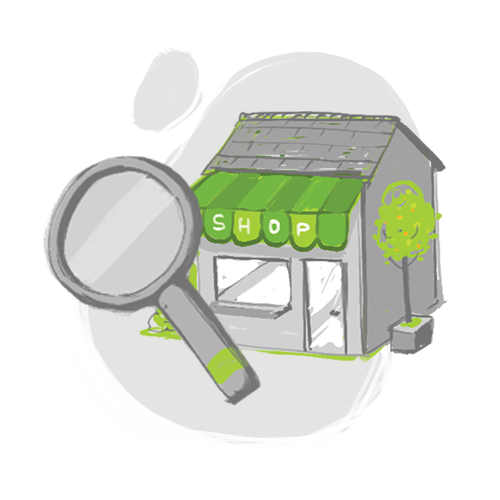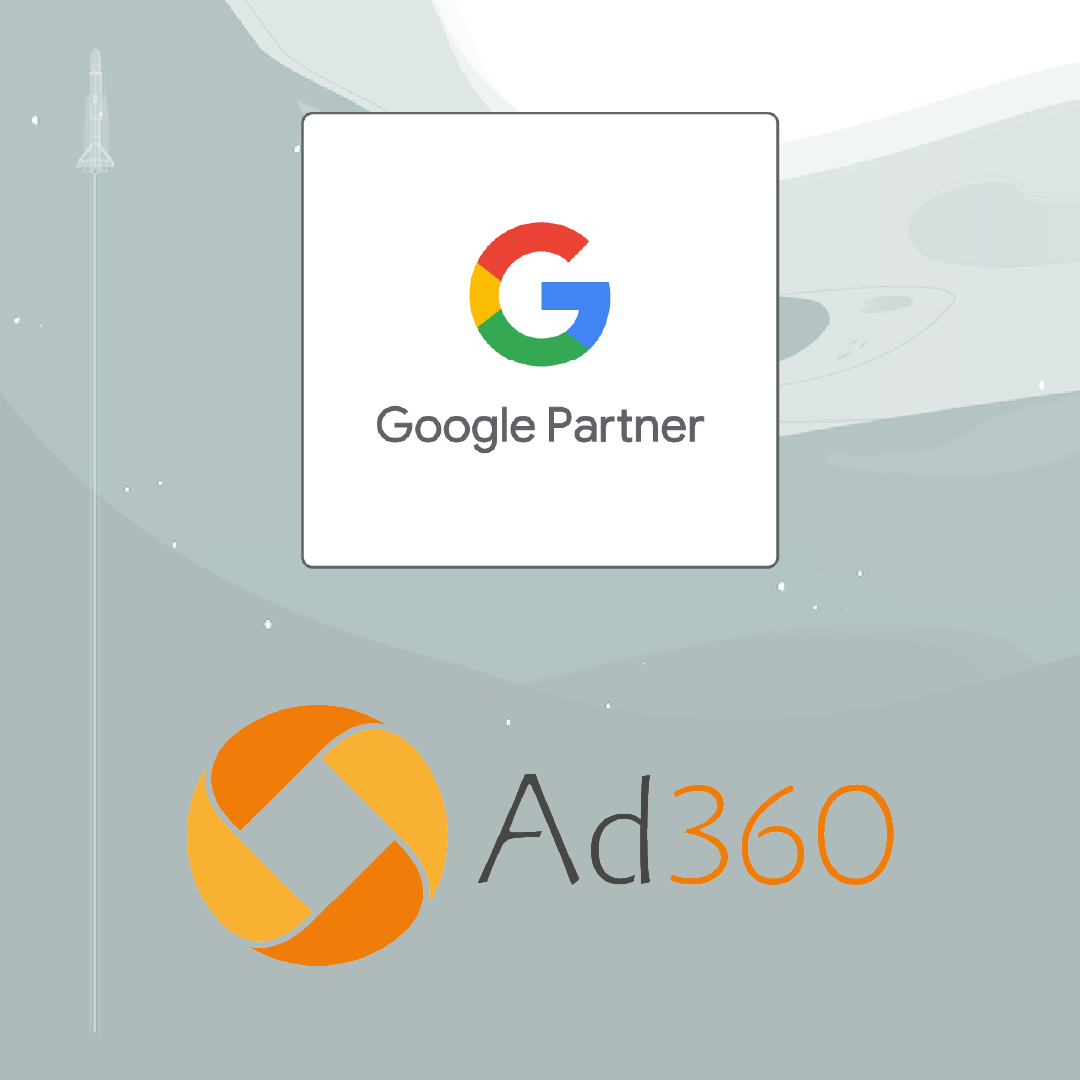Google Retail Search Released to the Public

Searching but Not Finding: the Phenomena of Search Abandonment
Picture the common scenario, where, frustrated by the lack of results on their search, a customer leaves your site without buying anything.
That simple snafu costs ecommerce retailers over $300 billion a year.
Amazing, right? Such a simple hitch in the process can bleed billions of dollars in the ecommerce industry. Even retail giants like Macy’s and Ikea suffer from search abandonment, so you are not alone!
Luckily enough, Google recently released its Google Retail Search to the general public, bringing the power of Google’s search engine to all online retailers. Read below how this new Google tool can help increase your sales on Shopify!
Why Google’s Retail Search is a Win for E-Commerce
A recent poll discovered that 94% of US customers abandon an online shopping session due to irrelevant search results. Imagine that a shopper types in, “comfy winter sweater” to your search bar… they probably won’t get very precise results!
However, with Google Retail Search, backing software would be able to link the customer’s buying intent, no matter how general in their search, to specific products available in your store. Most ecommerce sites have search bars that, if the specific product name is typed, can provide the result quickly for users.
But what about all the potential customers who don’t know your brand’s products yet? Navigating around to find the item that fits their match can be a chore they refuse to do, especially when ecommerce giants may be able to provide better search matches.
How Google Retail Search Helps Increase Sales on Shopify
Google Retail Search will help boost your Shopify sales in a few ways:
1. Advanced Query Understanding
This function provides high-quality search results for even the broadest searches. If you sell footwear, and someone types in, “shoes for the beach,” instead of telling them, “What can’t find that specific product, can you refine your search?” It will bring up a list of all your products that fit the context.
2. Semantic Search
You will be able to better gauge “customer intent” to match them with the best-fitting products on site.
3. Personalized Results
Google Retail Search will also factor in each user’s previous searches through their search engine optimizing their experience and providing them tailor-made search results, even on your Shopify site! All of this is done automatically for your ecommerce business.
4. State-of-the-art Customer Data Security
While the search results provided by Google Retail Search are personalized, Google implements “strong access controls” to ensure your customer data is anonymized and protected
Conclusion: Google Retail Search is Worth a Trial
As a certified Google partner, Ad360 knows the power of leveraging Google’s incredible search engine, ad platform, and analytics technology. If you want any advice or help implement Google Retail Search to your ecommerce site, contact us at Ad360 today! We provide a free website review, along with a free trial. That way, we can test your search query and see what comes up 😊 Less search abandonment could increase sales on Shopify, so don’t hesitate to check out Google Retail Search!
Google Ads Remarketing on Shopify

Introduction: How To Increase Sales on Shopify Using Google Ad Remarketing
If you didn’t already know, google ad remarketing (aka retargeting) is arguably the most effective tool for how to increase sales on Shopify. In fact, Google ads and Shopify work symbiotically when set up with “remarketing.”
However, when you see the nuances and options for establishing your Google ads remarketing tag and campaigns settings, plenty of questions arise on how to best optimize your Shopify store for sales success.
This post reviews how Google ad remarketing tags help increase your sales on Shopify. E-commerce marketing has lots of moving parts and analytics, but even a minor adjustment in your targeted audience can lead to getting more sales. Dive in to Ad360s view on how to best set up Google ads in Shopify!
Why Retargeting with Google Ads is a Powerful Tool to Increase Shopify Sales
The Google Display Network reaches roughly 90% of all users on the internet – learning all the best online promotional tools to leverage for increased Shopify sales is common sense!
Ecommerce utilizes retargeting with Google ads more than any other industry, and it’s no small reason why: remarketing with Google ads can lead to a 700% growth of branded search results and web traffic.
On top of that, customers are 70% more likely to purchase a product when engaging with a retargeted Google Display ad, and it is 8 times cheaper per click. Some may stop here and think that remarketing with Google ads is simply too complicated
How to Set up Google Ads Remarketing “Tags”
Shopify with Google ad retargeting is not as hard to set up as you might think! Go into your Google Ads/Analytics account and click on “audience manager” under “shared library.” After clicking audience sources,” you will see an option to “set up tag,” and you are on your way to establishing your ad remarketing campaign! Even if it seems foreign to traditional business owners, stick with the process – it is the difference between Shopify sales success and failure for most ecommerce stores. Ad360 wants your store to be the former, not the latter! So, put on your reading glasses, because the options on exactly how to use Google ads remarketing on Shopify can get very nuanced in the details.
After setting up the “tag”, it is time to segment your audience based on their platform, level of engagement, keyword searches, and timeline. It sounds like a lot to take in, but Ad360 will break it down here as best we can!
1. Pick a Platform (We recommend you include mobile)
Considering Google Analytics 4 will soon replace the sunsetting Universal Analytics interface, retargeted Google ads on mobile will experience explosive growth in the coming years. To get out ahead of the trend, Ad360 would recommend experimenting with mobile app retargeting – it is a shockingly underutilized marketing tactic by otherwise savvy business owners.
There are options to remarket on Google ads for traditional website users, customer emails, and Youtube, but again – none of these segments will experience the dynamic growth that mobile-based Google ad retargeting will in the next several years.
2. Define your Audience with Absolute Precision
The better you classify each part of your audience, the better your remarketed google ads will increase sales in Shopify. After picking the platform, Google will prompt you to create an audience filter based on metrics like the following:
- Visitors of a page
- Visitors over a specific period of time
- Visitors who visited a page with specific URLs (helps identify where customers are in your sales funnel)
- Visitors who came from a blog post
- Visitors who downloaded/used your app, or visited your store through the Shopify app
- Visitors who viewed a Youtube video, liked the video, or subscribed to your channel
- Visitors who “abandoned” their shopping cart
- Demographic info
- Geographic info
- Specific keywords the visitors type into Google’s search engine
3. Define your Keyword Searches
That final bullet point leads to the next major consideration for remarketing with Google ads in Shopify: which keywords to target for getting more sales (e.g. – “vintage clothes” for a Shopify clothing store).
Every time a user – who has previously visited your site – types that keyword phrase into their Google search, you can ensure that your store pops up in the first page of Google’s rankings. By targeting these customers and establishing the niche audience you want to reach with those keywords, Google ad remarketing on Shopify becomes substantially cheaper than traditional “Cost-per-click” ad campaigns.
4. Set a Clear Timeline for Google Ads in Shopify
Based on your Shopify market’s ad data from across each platform, you can conclude which timeline is most effective for getting more sales. 30, 60, or 90 days are the general parameters most stores use, so you can determine whether to retarget customers who have not engaged with your store in several months, or concentrate all your efforts and budget on potential customers who just recently engaged with your ecommerce site.
Conclusion: What Shopify Apps Do I Need for Google Ad Remarketing?
In a nutshell, Ad360 is the best Shopify app to increase sales in 2022! Our expertise revolves around innovative marketing tactics – like Google ad remarketing on Shopify – to help increase your Shopify sales.
We are a certified Google partner, meaning we have been vetted by the largest search engine in the world to provide best-in-class digital marketing services. With Ad360 help you strategize your ad campaign, e commerce marketing has never been so accessible 😊
We are one of the best Shopify review apps with a 5 star rating, but Ad360’s drive to expand and improve customer outreach is unmatched in the e commerce industry. We offer 24/7 live support and are backed by experts in digital marketing and data analytics. Try our free demo today to see for yourself why Ad360 is the best Shopify add to increase sales in 2022! Cheers and happy selling 😉
The End of Google Universal Analytics

Introduction: Google Announces they are sunsetting Universal Analytics
E-Commerce business owners beware! The previous generation of Google Analytics – Universal Analytics or UA in short – will soon be sunset, Google announced today. What is still the most widespread version of Google Analytics used in e-commerce websites will become unusable starting July 1, 2023. This means that it’s only a matter of time before everyone is using Google Analytics 4 (aka GA4). GA4, which was first introduced in July 2019, comes with many changes. The data analysis is more granular, user-friendly, and up-to-date on privacy controls. We’ll get into some of that below while to explain the significance of this announcement!
Before we do, it is important to note that, for existing business owners, historical data cannot be transferred over from Google Universal Analytics to Google Analytics 4. However, there is no need to get worked up – universal analytics will be sunset only next year, meaning business owners can learn to leverage the perks of Google Analytics 4 alongside their Universal analytics account in the meantime. That means as you “learn the ropes” to leverage GA4, you can continue using your existing Google Universal Analytics account.
That being said, business owners will want to migrate sooner rather than later to Google Analytics 4 – learn about some of the key feature updates below!
Integration with All Device Across Web & Mobile
First, it’s important to note that Google Analytics 4 will streamline and consolidate user data from both web and mobile platforms. Google’s new system will empower business owners to track user data across each device they use, painting a more complete picture of user behavior.
Business owners used to need a Firebase and Universal analytics account to share data, but GA4 brings all the customer data from mobile and web under one roof. Multiple data streams – all from different devices and web apps – can be viewed together seamlessly.
No More Cookies
We know they sound cute, but user cookies are a key weakness in user privacy. At this point, they are basically archaic, and tightening user privacy laws will make cookie tracking technology obsolete within the next few years.
Google Analytics 4 gets out in front of this issue by preparing for this “cookieless world.” All data, while connected to a web ID for the user, is completely anonymized. Powerful software fills in the gaps when you are modeling user behavior, meaning businesses can still predict customer behavior effectively while not jeopardizing their personal data.
If you rely on third-party data to collect user info, it is time to get acquainted with Google Analytics 4. It will allow you to continue gathering valuable user data without endangering their privacy or coming across as an “invasive” online company.
Everything is an Event
While Google Universal Analytics struggled to patch together a coherent picture of user behavior, Google Analytics 4 treats every user action as an “event,” creating a constellation of user data that clearly tells a story through their online behavior.
Before, business owners had to essentially infer parts of user data because the data simply was not streamlined or categorized together. You had to pick through different data streams, identify the same user, and manually put together a picture of the user’s online behavior. With Google Analytics 4, every single event is tracked and stored in the same system.
For example, imagine a potential customer first checked out your site on a Facebook mobile ad. Then, after getting home from work, they visited your online website from their computer, where they “signed up” for an account and e-mail alerts. After that, later in the evening while browsing on their phone, they receive an email with a “special deal” and decide to download your business’s app to formally place their first order. Google analytics 4 would trace that entire series of decisions, recording each as a unique “event” that illustrates how users are discovering and utilizing your online business!
Furthermore, these user events are organized to provide advanced analysis reports and helpful data visualizations that far exceed the power of Google Universal Analytics. Purchase probabilities, funnel reports, custom audience segment overlap, visualizations of user activity down to the “per minute” detail are just some of the features business owners can now leverage with the release of Google Analytics 4.
Conclusion: Ad360 Can Help Businesses Migrate to GA4 & Fully Leverage New Features
Clients of Ad360 will receive support transferring data and migrating to the new Google Analytics 4 interface. While the new Google Analytics interface does look different, remember it serves the same purpose: helping online businesses increase sales and thrive in the e-commerce ecosystem.
This is a significant step forward in data privacy and user data analysis, and we are so excited to be at the forefront of the upcoming Google analytics revolution! If you want support when learning how to best leverage the new features of Google Analytics 4, reach out for a free call with Ad360 today!
4 Keys to Unlocking SEO on Shopify

And why it’s VITAL for Sales Growth!
In part III of our “Search Engine Optimization” series (part I and II linked here), we distill the top 4 “keys” to boosting sales with SEO. Here, you’ll find the breakdown of actions you could take today to increase your store’s visibility on search engines like Google – and they aren’t complicated! SEO may not be rocket science, but it does take strategic, effective marketing strategies on your part.
Read below for the 360 degree, step-by-step guide to learn the practical application of SEO strategy!
1. Favicon design
Favicons are those little picture designs that appear in the corner of your website tab. Some popular ones are the multicolored “G” when on Google or the red “play button” icon on Youtube.
These little guys may seem unimportant, but they carry a lot of weight for SEO ranking! Simply put, they provide brand awareness, credibility, and customers an easier way to recognize your site. Even if you have incredible goods in your store and provide top-notch service, customers subconsciously judge you right away if you don’t have a favicon like other sites.
Picture a dilapidated, old storefront – looks like a tornado just hit it. Even if the goods inside are amazing, and the store owner is a peach of a guy, chances are you won’t go in! It looks too worn-down on the outside. You make a snap judgement to move on.
That’s exactly what will happen to your store without a favicon! Get one designed asap to increase sales to your Shopify store.
2. Descriptive heading tags for well-organized site categories
We’ve mentioned in an earlier article the importance of descriptive heading tags to better organize your site’s web pages. Here’s why that is so essential. Not only do users feel better browsing, Google’s “crawl” software won’t get confused indexing your site. The clearer the web page headings and the better classification of your info, the more SEO-friendly Google will consider your site… and you will be rewarded with a better ranking 😊
Sometimes, these headings are referred to as “H tags.” Make sure to keep your ducks in a row when building the content on each page. It should always start with a clear, descriptive, but not-too-wordy title! That’s a major key to growing your Shopify sales.
3. Detail meta and product descriptions
On top of good headings, remember that breaking up your info with easy-to-read product descriptions is essential for SEO best practices. If you have any product listed on your site unaccompanied by at least a few lines of descriptive text, you are doing your online business a disservice!
Make sure you remember that new potential customers browsing your site (as well as Google’s web crawlers), are not experts on your industry like you. If you can find a way to give them good information, segmented into different tabs on the product description, you give yourself the best chance to land on the first page in Google rankings.
4. Research backlinks through Google Search Console
This final key may be the most difficult to implement, as it involves some pretty serious market research: backlinks. Backlinks are essentially hyperlinks that connect your site to another. Consider when you look for, say, a new toaster online. You find a site that lists the “top 10 toasters,” and there are hyperlinks leading to each option – those businesses successfully have been “backlinked,” linking them to more web pages across the web and increasing their visibility.
Now, when starting off green, finding the right sites to reach out to for a backlinks “shoutout” can seem pretty daunting. So, we recommend starting by checking out Google Search Consoles information on backlinks here. Make sure to check out what backlinks competitors have, and from there, you can begin your own marketing campaigns to increase the number of affiliate sites that offer a “backlink” to your Shopify store. More quality backlinks, more sales for your Shopify store 😊
If you feel you would benefit from some SEO expertise to set up your store for success, reach out to try a free demo from Ad360 today! We can provide a free consultation to evaluate how effective your SEO practices are, and what we can do to bring you up the Google ranks 😊 Cheers, we hope you enjoyed the 4 keys to SEO success!
Ad360 is a certified Google Partner

Google has introduced in February 2022 a new Partner Program, with more robust Partner requirements.
This is a way for Google to certify businesses that have the required skill, experience and knowledge to help businesses run more successful Google Ads campaigns.
Ad360 is honored and proud to have been certified as a Google Partner under this new program launched in February 2022.
This certification recognizes the value that Ad360 brings to its users. Thanks to the integration of Google Ads campaigns in our Apps, Ad360 users are more likely to succeed and get better outcomes out of their advertising campaigns.
Google Ads is a fantastic and rich environment, that many businesses use to find new customers. However, its vastness sometimes also makes it difficult to navigate for business owners who don’t have professional advertising background or skills, especially given the numerous Google products and platforms included in Google Ads: Search Engine ads, YouTube ads, Gmail ads, Google Maps ads, all with many ad formats and features to master.
Ad360 helps users get the most of Google Ads. Thanks to automatic management and campaigns optimization using the years-long Research & Development of Ad360, they maximize the results of their campaigns. Plus, all these campaigns can be managed under one roof, along with other Social Media platform ads, and ads that run in millions of independent websites and mobile.
If you’d like to learn more, and get helped to run successful Google Ads campaign, please book a demo and see Ad360 App in action for yourself.